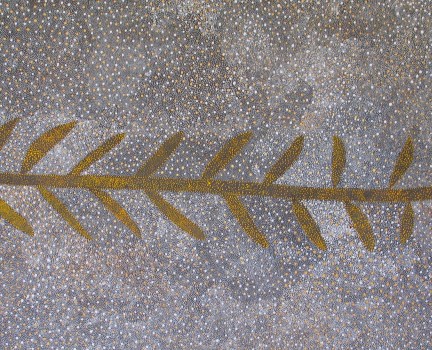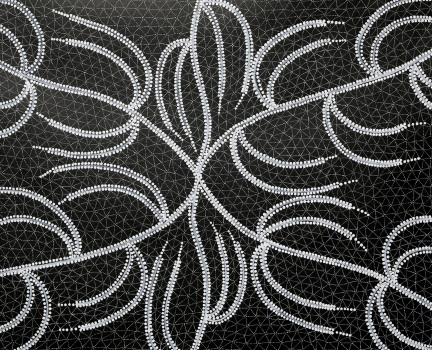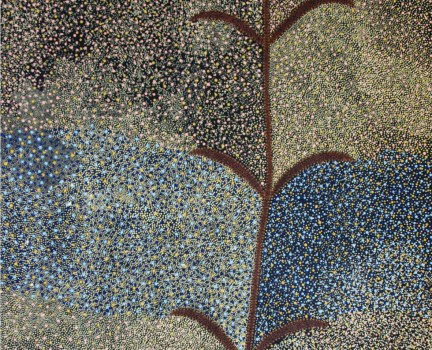Alpar Seed Dreaming
In the desert country of central Australia there are many varieties of seeds that are collected and harvested. One of these is commonly called the Rat-tail, Goosefoot or Green Crumbleweed plant. Its official European name is Dysphania kalpari, while in the languages in the Utopian Homelands of Central Australia it is known as Alpar.
A small, erect herb it is sticky to touch and is heavily scented with a citrus-like perfume. Growing especially well in Mulga tree country, it is found in abundance in the Utopia Region, north east of Alice Springs. It produces small clustered flowers that form long spikes, resembling a rat’s tail, and has small shiny black seeds. Due to the sticky nature of the plant, the seeds are not shed as soon as they mature, but are collected when the plant itself has dried out. This means that they are collected much later in the season when most other plant seeds are no longer available
The seeds of the Alpar are an important food as they are high in protein and low in fibre and one of the many bush seeds used to make damper, especially in the days before processed flour became available. They have a strong, aromatic taste and smell. Some people in the Utopia region still also use the plant for bush medicine. Both the leaves and seeds of the Alpar have medicinal properties. They are soaked in water to be used as a wash, or mixed with animal fat to be applied as an ointment, or the plant is boiled and the liquid is used as an antiseptic wash.
Doreen Nakamarra Dickson, June Bird Ngale and Rosemary Bird Petyarre are artists from the Utopia homelands who paint the Alpar Seed Dreaming. In the artworks, different coloured dots are often used to represent the Alpar seeds in their various stages of development, as they grow from their green stage to maturity.
These artists with traditional bush skills are familiar with the land and its abundant species of bush tucker, medicinal plants and native fauna. The artists have inherited these stories, along with important women’s stories, from her ancestors via her aunt Emily Kngwarreye, and they form the basis of her paintings.
Fellow Utopian artist Amy Dixon Kemarre also paints the story of the Alpar seed. In the olden days, the women of Ilkawerne, where she comes from, would collect these seeds, sometimes soaking them in water until swollen or cooking them in hot coals and then grinding them into a powder that was used for making damper (bread). This practice is not as habitual now due to supplies of ready-made bread, however the story continues to be taught to the younger women and ceremonies are still carried out to ensure its productivity. The scented leaves of alpar are also collected, soaked in water and used as a medicinal wash. Alternatively, they are ground into a powder and mixed with animal fats for use as an ointment, making this plant a very important source of both food and medicine. In Amy’s painting the dot work represents the dry seeds of alpar, ready to be collected.
Read more:
Back to Aboriginal Dreamtime Stories





